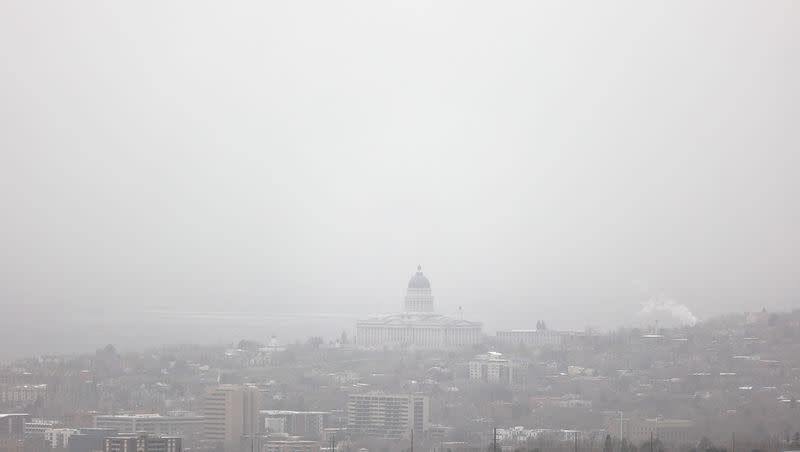Report: Northern Utah has some of the country’s worst ozone, particulate pollution

Though there was noticeably less winter inversion along the Wasatch Front this year due to the historically wet winter, Utah’s air quality still ranks among the country’s worst.
That’s according to a new report from the American Lung Association that listed the Salt Lake City-Provo area in the 20 worst cities for ozone and short-term particle pollution.
Related
The annual “State of the Air” report was published by the American Lung Association Wednesday, looking specifically at rates of ozone and fine particulate pollution, which the association calls “two of the most widespread and dangerous pollutants.” The report is compiled using data from the Environmental Protection Agency.
The report comes a day after winds in eastern Nevada dumped dust along the Salt Lake Valley Tuesday, clouding the view of the Wasatch Mountains and sending fine particulate readings in Tooele above the federal threshold set by the U.S. Environmental Protection Agency.
Here are some key takeaways for Utah in the report:
Salt Lake City ranks 10th in the U.S. for worst ozone pollution, and 19th for worst short term particle pollution.
Logan is 17th for worst short term particle pollution.
Seven Utah counties get an F grade for the number of “high ozone days” — Davis, Duchesne, Salt Lake, Tooele, Uintah, Utah and Weber. Box Elder received a D grade.
Only two counties — Iron and Garfield — received a B grade for ozone pollution. No counties scored an A.
Five counties get an F grade for the number of “high particle pollution days” — Cache, Davis, Salt Lake, Tooele and Utah. Both Weber and Duchesne counties received a D.
Washington County is the only county that received a B grade, again the highest score in Utah for particle pollution.
A whopping 119.6 million Americans live in areas with unhealthy levels of ozone or particle pollution, which is roughly 36% of the country’s population.
And while that’s 17.6 million fewer than last year’s report, the association found that 63.7 million Americans live in counties that have failing grades for daily spikes of particle pollution. That’s the highest ever recorded in the State of the Air report.
California cities are overwhelmingly represented among those most impacted by ozone, year round particle and short term particle pollution, with the greater Los Angeles, Fresno, Visalia, Sacramento and Bakersfield regions each in the top 10 for all three categories.
“The good news is that ozone pollution has generally improved across the nation, thanks in large part to the success of the Clean Air Act. In this year’s ‘State of the Air’ report, we found that 19.3 million fewer people are living in areas with unhealthy levels of ozone pollution, also known as smog,” said Harold Wimmer, national president and CEO of the American Lung Association, in a news release.
“However, the fact is that 120 million people still live in places with unhealthy air pollution, and not all communities are seeing improvements. This is why it is crucial to continue our efforts to ensure that every person in the U.S. has clean air to breathe,” he said.

